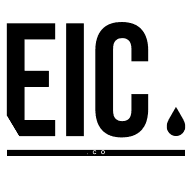What Are Examples of Successful Editorial Strategies?
In the quest for editorial excellence, we've gathered insights from seasoned professionals, starting with a Content Writer and Editor's strategy to implement peer-review for ensuring quality content. Alongside expert opinions, we've included additional editorial strategies that have proven successful in various publications. These range from engaging audiences through crowdsourcing to partnering with influential thinkers to enhance the publication's reach and credibility.
- Implement Peer-Review for Quality Content
- Focus on Niche Subjects
- Engage Audience with Crowdsourcing
- Improve Visibility with SEO
- Diversify Content Formats
- Establish Stringent Fact-Checking
- Partner with Influential Thinkers
Implement Peer-Review for Quality Content
At Nursing Writing Services, we revamped our editorial process by introducing a peer-review system where experienced writers would review each other's drafts before final submission. This collaborative approach not only improved the quality of our content by ensuring multiple layers of scrutiny but also fostered a sense of camaraderie and continuous learning among the team. The impact was immediate and significant: We saw a 30% increase in client satisfaction ratings, and repeat business surged by 25%.

Focus on Niche Subjects
What we do that works at Réapparition Journal is having a specific niche of subjects that we focus on. Having this niche means having one of the largest presences in the illness/health care/literary journal crossover space. Our authors feel like they've found the perfect fit for their work, and our readers feel that they've found an all-encompassing source for the specific kinds of pieces they want to read. While some may think our niche may place limitations on the size of our audience, the fact of the matter is that we are able to connect better with our readership. Furthermore, we have an international readership composed of patients, health care workers, people in recovery, and loved ones—having a niche focus doesn't mean that your readership's magnitude is necessarily constrained.
Engage Audience with Crowdsourcing
A successful editorial strategy often involves engaging with the audience directly to gather content. By using social media platforms, editors can encourage readers to submit their own stories, opinions, and photos. This approach not only enriches the content pool but also increases reader investment and interaction with the brand.
Furthermore, it can lead to the discovery of unique and diverse perspectives that might otherwise go unnoticed. Explore the potential of your audience and start crowdsourcing today for a more vibrant publication.
Improve Visibility with SEO
Incorporating Search Engine Optimization (SEO) into editorial content has proven highly effective. By crafting compelling headlines and structuring articles with SEO in mind, publications can significantly improve their visibility on search engines. This method attracts a greater readership by ensuring that content appears in relevant search results, thereby increasing web traffic and potential revenue.
It is crucial for editors to understand and implement SEO techniques. Make optimizing your content for search engines a priority to help your publication flourish.
Diversify Content Formats
Expanding the range of content formats is a dynamic strategy that caters to varied audience preferences. Introducing audio content like podcasts, and visual media such as videos, can capture the attention of those who may not be inclined to read long articles. This diversification allows a publication to reach wider demographics and adapt to changing media consumption habits.
It also provides multiple entry points for audiences to engage with the brand's content. Start diversifying your content today to meet the needs of a broader audience.
Establish Stringent Fact-Checking
Maintaining a reputation for reliability is crucial, and stringent fact-checking is a cornerstone of that trust. Publications that dedicate resources to verifying every claim and source foster reader confidence and authority in their field. This meticulous attention to detail helps prevent the spread of misinformation and upholds the publication's credibility.
Establishing a robust fact-checking protocol is essential in the current media landscape. Ensure your content is accurate and trustworthy by committing to thorough fact-checking.
Partner with Influential Thinkers
Creating partnerships with influential thinkers through guest editorials and collaborative writing projects can introduce fresh insights and elevate a publication's profile. These partnerships can tap into the guest's follower base, expanding the publication's reach and adding credibility to its brand. Thought leaders and sector-specific experts can offer authoritative perspectives that captivate the publication's existing audience.
It's a strategic move that can lead to mutually beneficial outcomes for both the publication and the contributors. Consider inviting a guest editor for your next issue to foster new dialogues and insights.

